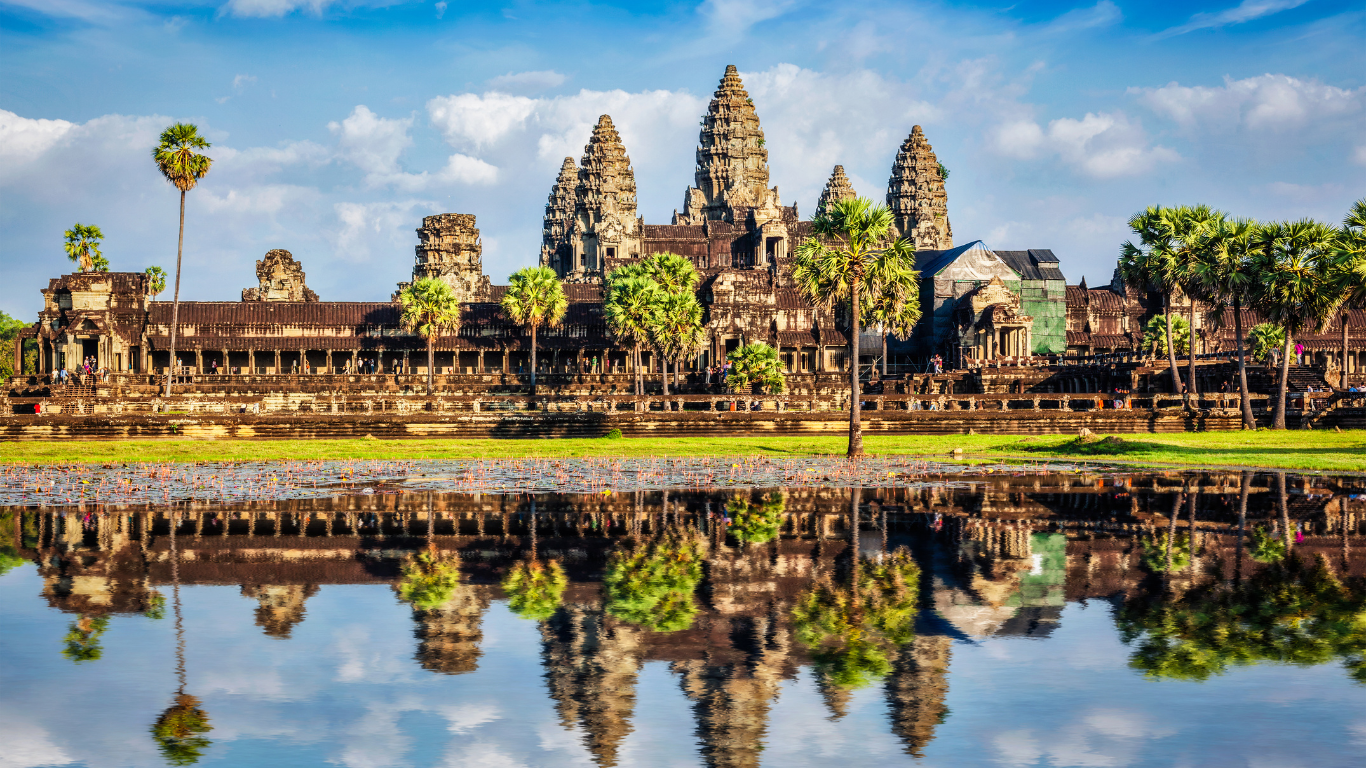
Tour Packages
CAMBODIA
Vietnam Trip from Southern by Train
Circuit
15 days – 14 nights
Combo: Cambodia & Vietnam
Circuit
13 days – 12 nights
8-Day Private Tour Highlights of Cambodia
Circuit
8 days – 7 nights
Siem Reap: All Must-See Attractions
Circuit
5 days – 4 nights
Angkor Wat 2-Day Tour with Sunrise and Sunset
Circuit
2 days – 1 night
Mekong Delta & Cai Rang Floating Market
Circuit
2 days – 1 night
3-Day Mekong Delta & Optional Exit to Phonm Penh
Circuit
3 days – 2 nights
Explore 150+ Tour Packages
Cambodia like never before
Tour Packages
Featured Destinations
CAMBODIA
Things to do
CAMBODIA
Day Trips
CAMBODIA
Free Walking Tours
The best free walking tour guides in the world are here. A “free tour” is a guided city tour where history, culture, and lifestyle are explained. Currently, it is already the first choice for travelers in any city they visit. Get a free walking tour in CAMBODIA with local guides:
Free Tours in CambodiaMulti-day Trips
CAMBODIA
eSIM for Cambodia
Buy an international eSIM and never pay for roaming again. Connect to Unlimited Internet at 3G/4G/LTE/5G speed in minutes and stay in touch with your family and friends. Enjoy a 5% discount on any plan and destination: Promo Code: ITACATOURS5
Get Unlimited InternetPhnom Penh
CAMBODIA
Phnom Penh is a city shaped by rivers, memory, and daily motion. Located at the junction of the Mekong, Tonlé Sap, and Bassac rivers, it moves between royal landmarks, colonial streets, and modern growth. Life in Phnom Penh flows through markets, temples, and waterfront paths. Along the Sisowath Quay, locals and visitors walk, cycle, and gather at sunset. Street vendors sell grilled meats, tropical fruit, and iced coffee. The Central Market and Russian Market offer textiles, spices, and electronics in busy indoor halls. The city’s rhythm blends tradition and change. The Royal Palace and Silver Pagoda stand near gardens and ceremonial spaces. Nearby, the National Museum displays Khmer sculpture and artifacts. Buddhist monks walk through neighborhoods, while motorbikes and tuk-tuks weave through traffic. Phnom Penh also holds spaces of reflection. The Tuol Sleng Genocide Museum and the Killing Fields of Choeung Ek mark Cambodia’s recent history. Visitors move between remembrance and resilience. From Phnom Penh, travelers reach ancient temples, river islands, and countryside villages. The city’s airport and bus terminals connect to Siem Reap, Ho Chi Minh City, and beyond. Whether you’re walking by the river, exploring a market, or sitting in a quiet courtyard, Phnom Penh invites you to move between past and present with calm and continuity.
Things to do
PHNOM PENH
Free Walking Tours
The best free walking tour guides in the world are here. A “free tour” is a guided city tour where history, culture, and lifestyle are explained. Currently, it is already the first choice for travelers in any city they visit. Get a free walking tour in PHNOM PENH with local guides:
Free Tours in Phnom PenhDay Trips
PHNOM PENH
Multi-day Trips
PHNOM PENH
Siem Reap
CAMBODIA
Siem Reap is a town shaped by temples, pathways, and quiet transitions. Located in northwestern Cambodia, it serves as the main gateway to Angkor, a vast archaeological park where stone towers rise from jungle and history moves through carved walls. Life in Siem Reap flows between the old and the new. In the mornings, travelers head to Angkor Wat, Bayon, and Ta Prohm, walking through galleries, courtyards, and tree-covered ruins. In the afternoons, locals gather in markets, cafés, and riverside parks. The Old Market sells spices, textiles, and street food like grilled skewers and tropical fruit shakes. The town’s rhythm blends tourism with routine. Along Pub Street, restaurants and bars fill with music and conversation. Nearby, art galleries and craft shops show local design and handmade goods. Buddhist temples offer quiet spaces, while tuk-tuks move steadily through the streets. Siem Reap also hosts cultural shows, cooking classes, and workshops that connect visitors with Khmer traditions. The Angkor National Museum presents sculpture, architecture, and religious history. Day trips reach floating villages, rice fields, and forest trails.

